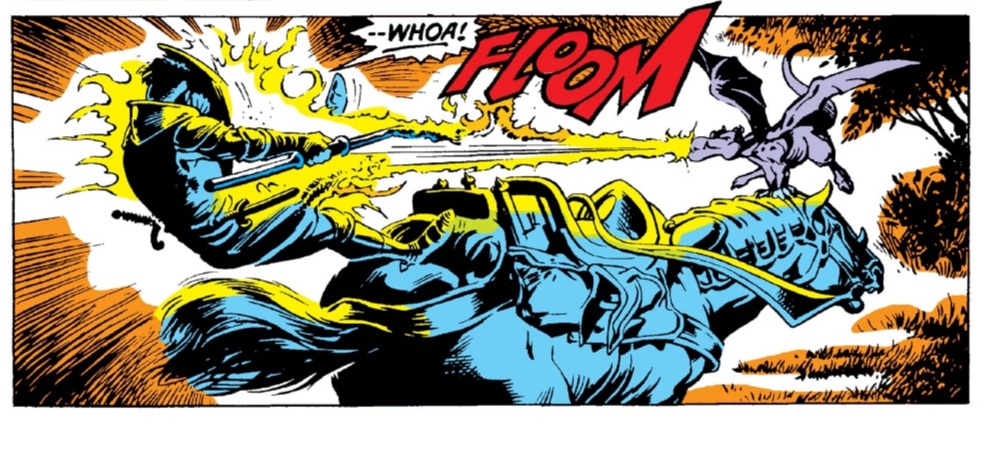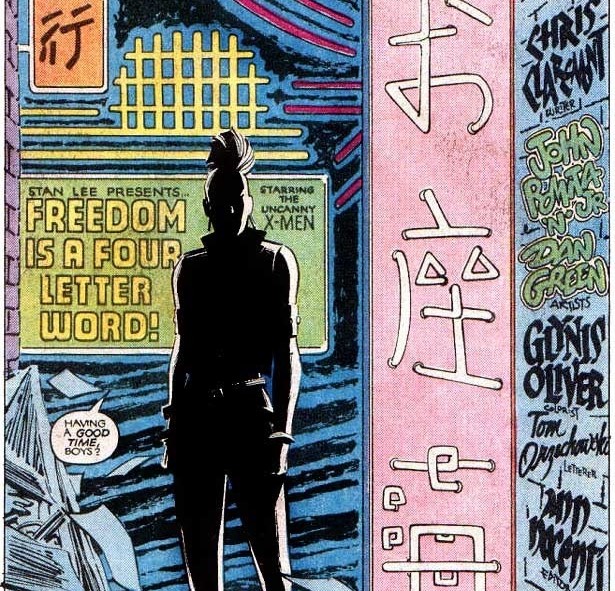The Cross-Time Caper is easily the most famous story arc from Claremont’s Excalibur, but it’s also a misnomer. Rather than ‘time’ (or even dimensions) the caper is actually built around a tour of famous fictional settings. 1/7 #xmen #excalibur @GoshGollyWow 

The story begins with a dive into a world of Arthurian Romance in the spirit of Thomas Mallory’s “Le Morte D’Arthur” or T.H. White’s “The Once and Future King.” This initial foray sets the tone for juxtaposing Excalibur with a different fictional universe. 2/7 

From there, the team lands into a metatextual alternate version of the Marvel Comics Universe itself; After that they find themselves in Edgar Rice Burroughs’ John Carter of Mars; after that: a Manga universe with direct connections to Dirty Pair and Speed Racer. 3/7 

Next, the team lands in an alternate history “What If?” in the spirit of “The Man in the High Castle” by Philip K. Dick. Instead of WWII here, however, it’s the American revolution that was lost and the world thus unfolds along a different trajectory. 4/7 

The final stop ahead of the conclusion in the omniversal hub is a universe inspired directly by Judge Dredd. Interspersed or overlapped with these major arcs and storylines are brief touches to other fictional universes such as Doctor Who, Lone Ranger, Star Wars, etc. 5/7 

Excalibur had always been the self-referential X-book (long before Milligan’s X-Force, Deadpool, or Worst X-Man Ever), but the Cross-Time Caper can bee seen as something of a jam session, exploring and riffing on a series of iconic fictional universes. 6/7 

Along the way, stories unfold directly around the setting, offering readers’ a sort of sampler package of some much beloved fictional universes, each of which holds the potential to impact, define, or redefine the Excalibur characters as they encounter it. 7/7 

• • •
Missing some Tweet in this thread? You can try to
force a refresh






















